(Visited as part of “Open House London.”)
18 Stafford Terrace was the home of Victorian cartoonist Edward Linley Sambourne, with his wife, children and live-in servants. The house is essentially unaltered since then, and presents an almost unique Victorian interior, dimly lit and with the expensive hand-made wallpaper almost covered by framed drawings, prints and paintings, and a dense clutter of furniture and collectible objects. There is stained glass in some of the windows.
On the free Open House day, I got to see (after queueing) the ground floor, part of the stairwell, and the Victorian loo. If you visit at another time, the 1.5 hour paid conducted tours go to all five floors. The contents of the basement are long gone and replaced by meeting room, shop, and modern toilets.
The house is now owned and operated by the Royal Borough of Kensington and Chelsea.
This should be an essential visit if you are interested in Victoriana.
Derry & Toms Roof Gardens, London
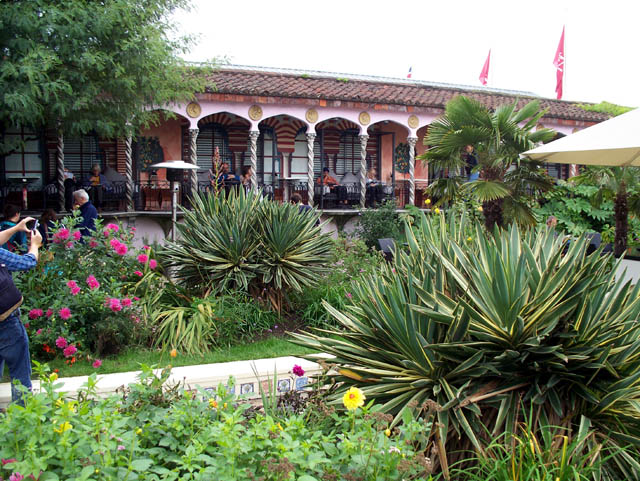
(Visited as part of “Open House London.”)
The Roof Gardens are best known to older visitors as the former Derry & Toms roof gardens, but have since 1981 been leased by Sir Richard Branson’s Virgin Group and are known as the Roof Gardens and Babylon Restaurant.
The Gardens are spectacular, with three themed gardens, Moorish themed structures, a stream and ponds, and resident flamingoes and ducks.
The Gardens were listed as a Grade II site by English Heritage in 1978.
The Roof Gardens and Babylon Restaurant and nightclub has its own website with pictures.
The public can visit the Gardens free of charge when they are not required for a function. They are accessible from Derry Street, through a doorway marked “99 Kensington High Street”.
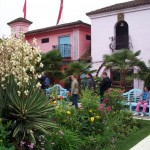
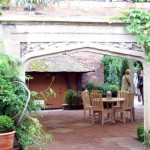
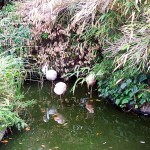
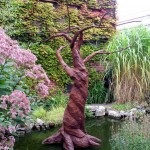
Marlborough House, London
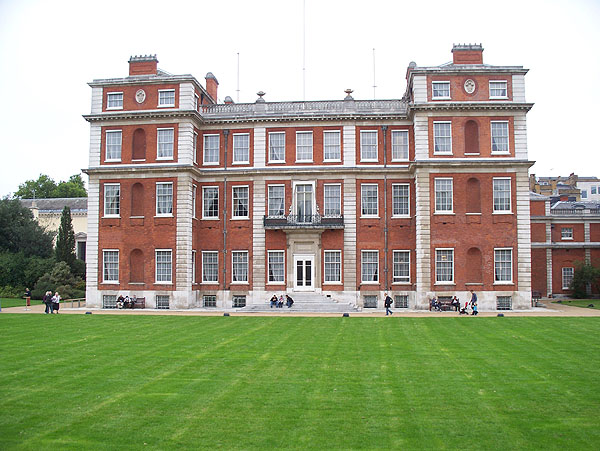 Private
Private
(Visited as part of “Open House London.”)
A former royal residence hidden behind Pall Mall. It was originally designed by Sir Christopher Wren for the Duchess of Marlborough, who dismissed her architect in 1710 and supervised the work herself. It was finished in 1711. In the nineteenth century the house was substantially altered and extended, with added wings and two more floors. The Crown bought back the lease in 1817, and the last royal resident was Queen Mary (died 1954, widow of George V). It became a Commonwealth centre in 1962.
The double-height Blenheim Saloon has ceiling paintings originally made for the Queen’s House at Greenwich, wall paintings depicting the battle of Blenheim, and other art. Downstairs are a series of finely decorated staterooms, with art. There are two stairwells with wall-paintings.
There is a large and attractive garden at the rear, but as it is largely laid out as lawn you need not allow much time for looking around it. Keep off the grass!
Not normally open to the public (except by pre-booked group tour).
Exterior photos only.
Romanian Cultural Institute, London
Private
(Visited as part of “Open House London.”)
A mansion, speculatively built in the 1840’s and designed by George Basevi in a sort of classical-lite style. It’s in Belgrave Square, and I visited it because it was across the road from the Argentinian Embassy.
Contains a very English-looking fine panelled room downstairs and a suite of fine rooms with a French look, upstairs. I watched an interesting film about the Carpathian countryside, and saw a display about pioneer Rumanian aviator Aurel Vlaicu.
There are several other embassies nearby.
Click on images to enlarge)
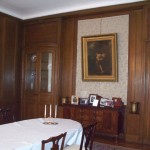
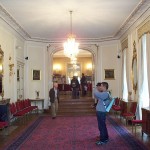
Argentine Ambassador’s Residence, London
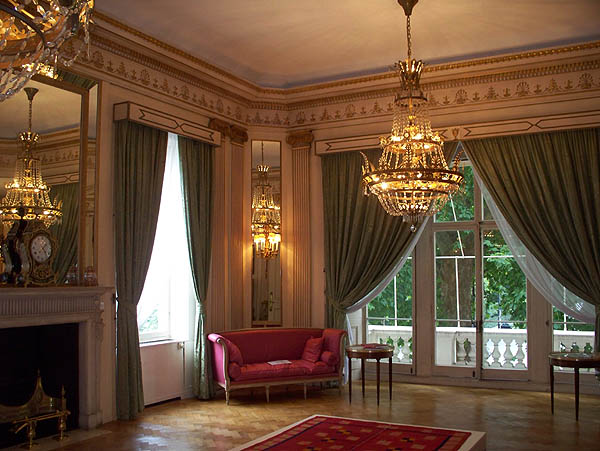 Private
Private
Visited as part of “Open House London.”
An elegant mansion at the north corner of Belgrave Square, speculatively built by Thomas Cubitt in the late 1840’s. It had been the scene of a number of political and cultural events, from the recruitment of nurses by Sidney Herbert for the Crimea, to being a haven for Argentinian volunteers during WWII.
During the Open House London weekend, the Residence had an exhibition of Argentinian textile art, as well as the permanent collection of interesting Eeropean and Argentinian art. The principal rooms are very opulent.
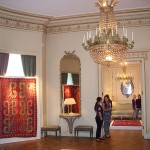
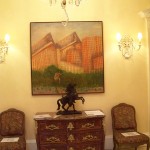
26 Whitehall and Admiralty House, London
Private
(Visited as part of “Open House London.”)
26 Whitehall was built in 1725, and houses the Admiralty Boardroom, still used by the First Sea Lord to direct the operations of today,s Royal Navy. The rest of the building is now used by the Department of International Development. The Boardroom contains notable wooden panelling, with a limewood centre-piece by Grindling Gibbons. There is also a wind dial connected to a vane on the roof, and various naval paintings and other artefacts.
The adjoining Admiralty House was built in 1785 as the residence of the First Lord of the Admiralty, and the ground floor contains an elegant suite of staterooms. There is a steep, doubly-wound stair lit by a elegant lunette.
Both buildings contain art and antiques from the MOD Art Collection. Well worth a look.
Not normally open to the public. Internal photography not permitted.
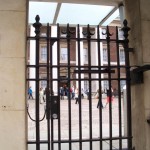
Banqueting House, London
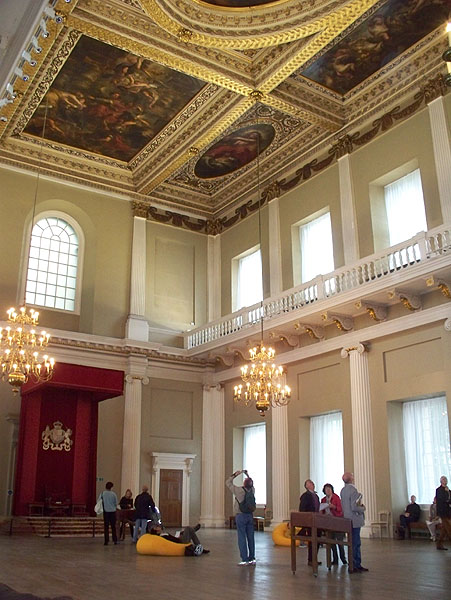 Historic Royal Palaces
Historic Royal Palaces
(Visited as part of “Open House London”)
Banqueting House, Whitehall is one of the first English Palladian style buildings, designed by Inigo Jones for James I and finished in 1622. It was intended for masques, receptions and entertainments, but was less used after the ceiling paintings by Peter Paul Rubens were installed in 1630-4. The smoke from candles during evening receptions had begun to damage the paintings.
The building is probably most famous as the scene of the execution of Charles I. It’s ironic that one of the last things Charles did was to walk under paintings glorifying the divine right of kings.
Regularly open to public -charges apply.
Well worth a look.
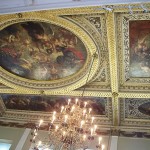
Taplow Court, Bucks
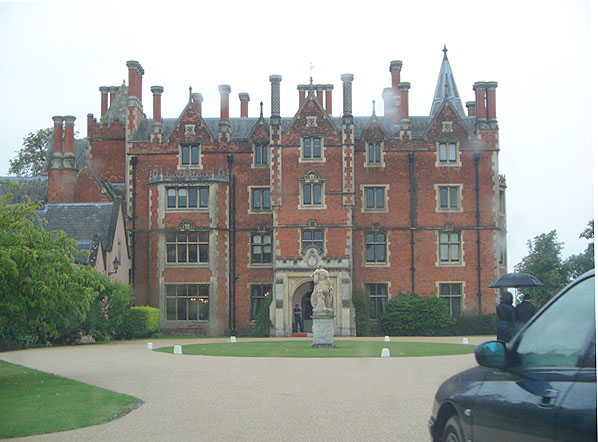 Private.
Private.
Heritage Open Day visit.
Taplow Court is a large Victorian house in the village of Taplow in south Bucks. The present house was originally Jacobean, but arrived at its present appearance by stages of modification and extension, by the Earls of Orkney in the 18th century, then after it was sold in 1852, by the Grenfells. William Grenfell, Lord Desborough, was the organizer of the first Olympic Games in Britain, in 1908.
The focus of the interior is the three-storey Norman Hall, inserted by the Orkney heir, Thomas Hamilton in the 1830’s. The hall doors are beautifully decorated with carved wood panels.
The house is now owned by SGI (Soka Gakkai International Buddhists), who seem to have spent a great deal of money restoring the house and grounds.
The attractive grounds include gardens, and there is an important Saxon burial mound just behind the house.
The house and grounds are worth a visit. They are open free of charge on several Open Days each year.
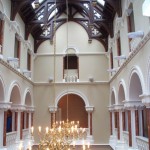
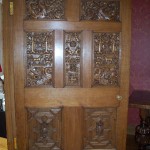
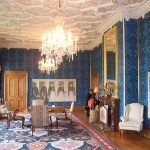
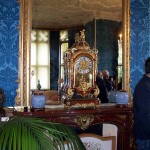
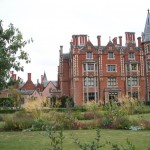
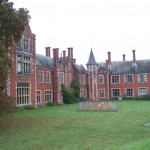
Heritage Open Days & Open House London
Open House London 2013
Get into great architecture for free 21-22 Sept.
Heritage Open Days (England) 2013
Historic buildings opened for free + events 12-15 Sept.
Coughton Court, Warwickshire
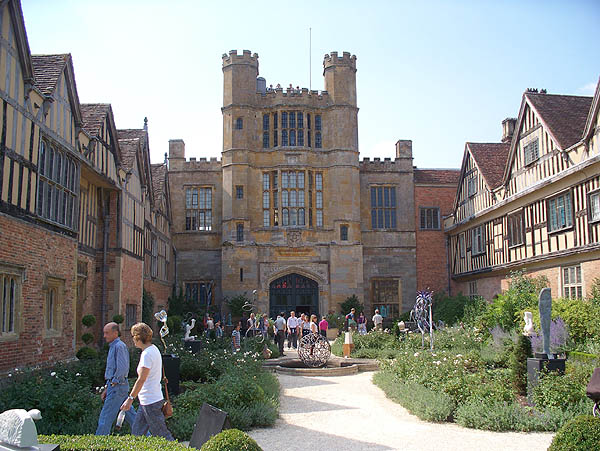
National Trust
The Throckmorton family have owned Coughton (pronounced ‘coat-on’) since the 1400’s and the present house, with its gatehouse and two wings, dates from the 16th century onwards. The Throckmortons were a Catholic family, and much of their history is a story of persecution, secret worship, and hiding priests. The family were also entangled in the Gunpowder Plot conspiracy.
The house, as seen from the courtyard, has two projecting brick and timbered wings in a Tudor-ish style, connected by an imposing stone gatehouse. From the other, West, side, the stone gatehouse, flanked by a pair of Gothic styled wings, dominates.
Parts of the gatehouse, including the roof, and most of the South wing are opened to visitors. A ‘priests’s hole’ can be seen in the tower. The house contents are interesting, and include some religious relics. The double-height Saloon is the biggest room, and apparently was the medieval Hall. Looking at the ground-floor South wing plan, it appears that there are some spaces near the end of the tour that are easy to miss.
In the grounds, there is no shortage of things for visitors to look at: a walled garden, a lake, river walks, an orchard, two churches, and a vegetable garden. When I visited there were scores of for-sale sculptures dotted around the grounds.
Coughton appears to be a popular destination, and if you want to go around the house it is advisable to go early to avoid being caught out by the timed entry ticketing.
